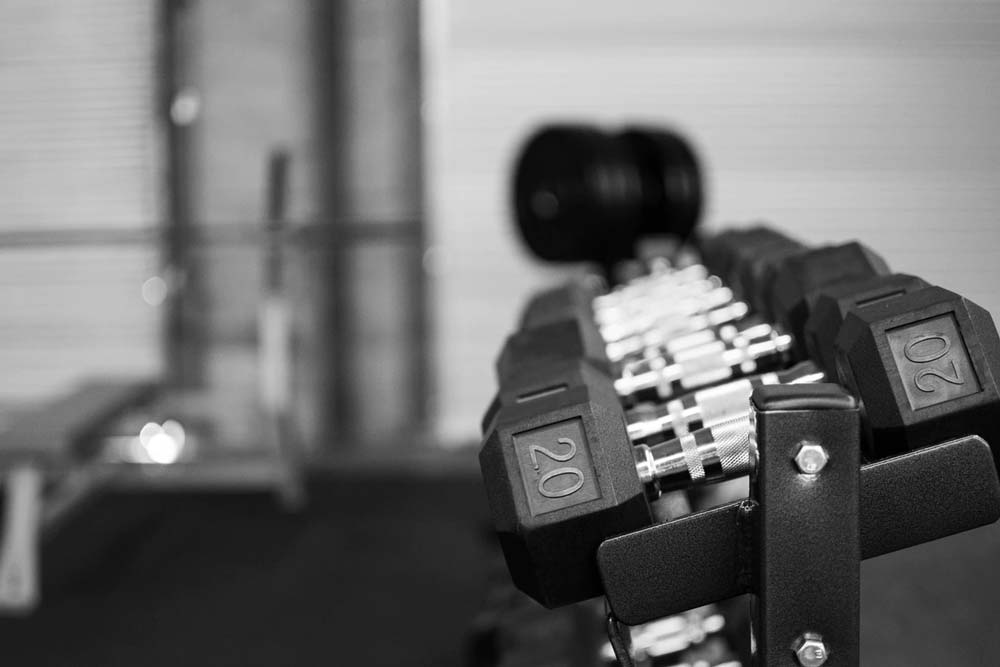It’s an age-old debate in strength training circles: Should you do low weight, high reps or high weight, low rep exercises during your workout sessions?
This is perhaps one of the most commonly asked questions in the world of strength training. So, in this article, we’re here to settle the debate once and for all. Coming up, we’ll walk you through the basics of balancing reps and weights in strength training so you can decide what’s best for your workouts.
Strength Training Basics
Before we get too far ahead of ourselves here, let’s discuss some foundational strength training concepts. Doing so will allow us to discuss the advantages and disadvantages of the “low weight, high reps vs. high weight, low reps” argument in more detail.
Types Of Muscle Fibers
The first thing that you should know about strength training is that you have two main kinds of muscle fibers in your skeletal muscles: type 1 and type 2. Also known as slow-twitch (type 1) and fast-twitch (type 2), these fibers have vastly different purposes within the body.
Slow-twitch muscle fibers are quite small and are designed to be fatigue-resistant so that you can sustain light to moderate exercise for long periods. According to the National Association for Sports Medicine (NASM), slow-twitch fibers are surrounded by blood vessels and contain high concentrations of both mitochondria and myoglobin.
This means that slow-twitch fibers mainly rely on aerobic respiration to create energy. However, slow-twitch fibers aren’t capable of creating a lot of force, so they’re best for slow long-distance runs, not fast sprints.
Fast-twitch muscle fibers, on the other hand, are designed for short bursts of very intense exercise, like a sprint. Since they have a lower blood supply than their slow-twitch cousins, fast-twitch fibers rely mostly on anaerobic respiration to create energy.
Due to this limited blood supply, fast-twitch muscle fibers tend to fatigue more quickly. They’re ideal for creating a lot of power in a short period of time, but they won’t be able to withstand the rigors of a long bike ride.
This might all sound like a bunch of technical jargon. But, the basic concept here is that slow-twitch muscle fibers are critical for endurance activities (like a long hike). In contrast, fast-twitch fibers are essential for your fast, powerful movements (like Olympic weightlifting).
Keep in mind that we all have both types of muscle fibers in our bodies. We will never have only type 1 or type 2 fibers in our bodies. However, we can train specifically to grow and strengthen a specific type of muscle fiber development, based on our fitness goals.
The Strength-Endurance Continuum
A solid understanding of the different muscle fibers is essential when we start to talk about how specific training methods and exercises affect our overall fitness. When we train, it’s impossible to maximize both fast-twitch (strength) and slow-twitch (endurance) muscle fiber development at the same time.
In reality, we have to choose between maximizing either strength or endurance with every exercise. This brings us to something called the “Strength-Endurance Continuum.” The Strength-Endurance Continuum is a training concept that helps us understand how specific exercises affect our performance.
On the left-hand side of the continuum, we have strength, and on the right-hand side, we have endurance. Or, to put it another way, on the left-hand side we have high weight, low rep exercises, and on the right-hand side, we have low weight, high rep workouts.
What the Strength-Endurance Continuum helps us realize is that it’s impossible to improve both our muscular strength and our muscular endurance (or our fast-twitch and slow-twitch muscle fibers) at the same time. Instead, we have to focus on one of these two goals in any given exercise.
High Reps or Low Reps?
So, now that you understand how our muscle fibers and the Strength-Endurance Continuum affect our physical fitness let’s discuss when you would use high reps or low reps exercises.
The Benefits of High Weight, Low Reps Exercises
Simply put, high weight, low reps exercises benefit your type 2, or fast-twitch muscles. High weight exercises are generally performed at 80-90% of your 1 rep maximum for just 1-5 reps per set. These exercises focus more on building muscular strength instead of muscular endurance.
However, just because you’re building muscular strength does not mean you’re going to end up with huge muscles. This is one of the biggest misconceptions about high weight low reps workouts, particularly among women.
Many women want to be stronger, but they’re afraid to do high weight, low rep exercises because they’ve been told that this is what you should do if you want to bulk up. In reality, studies show that you can maximize your overall muscle strength with high weight, low reps training, but this doesn’t necessarily mean you will gain muscle mass.
“Bulking up” (also known as hypertrophy) is actually quite hard to do, which is why bodybuilders have to work so hard for the results they desire. For most people, bulking up involves high weight, low rep exercises, as well as a moderate amount of cardio and a very strict high-protein, high-calorie diet.
Additionally, one’s ability to “bulk up” has a lot to do with their body’s testosterone and growth hormone (GH) levels, according to research from the University of Jyväskylä in Finland. So, most women with relatively low levels of testosterone and GH will not bulk up, no matter how hard they try.
On the other hand, strength training to build overall muscle strength is of the utmost importance. According to Harvard Medical School, regular weight training to build muscle strength can reduce the likelihood that we will develop bone-related diseases, such as osteoporosis.
Ultimately, building strength through high weights, low reps exercise is vital for everyone, regardless of why you’re training. Doing so helps your fast-twitch muscle fibers develop and can help lower your risk of developing a whole host of diseases without bulking up.
The Benefits of Low Weight, High Reps Exercises
While high weight, low reps exercises can help you build muscular strength, low weight, high reps exercises can help you build muscular endurance. These exercises are generally performed with weights at around 40% of your 1 rep maximum for 15 or more reps per set. Since low weight, high reps exercise focuses on more prolonged exercise; they are critical for building soft-twitch (type 1) muscle fibers.
However, it’s a common misconception that doing low weight, high reps exercise will help you lose weight. In reality, a lot of weight loss has to do with eating a well-rounded diet. While regular exercise and strength training can certainly help with weight loss, low weight, high reps exercises don’t specifically “target fat.”
What low weight, high reps exercises do, though, is build up your overall muscular endurance. This means that your muscles will be able to last longer during moderate-output workouts, like a long run, hike, bike, or swim.
Many endurance athletes will spend much of their strength training time on low weight, high reps exercises. This helps ensure that their muscles won’t fatigue during those crucial last minutes of a race.
Putting It All Together
At the end of the day, you have a lot of options when it comes to planning your workout program. Both high weight, low reps, and low weight, high reps exercises have their advantages and disadvantages.
Exercising with heavy weights allows you to build up overall muscle strength and your fast-twitch muscle fibers. On the other hand, low weight exercises increase muscle endurance and improve the abilities of your slow-twitch muscle fibers.
But, just because your goal is to build strength doesn’t mean you should stick exclusively to high weight exercises. In reality, low weight, high reps exercises can help your muscles develop the endurance they need to stave off fatigue after countless low-reps sets with heavy loads.
Along that same line, high weight, low reps exercises aren’t just for bodybuilders. These exercises can help people build overall muscle strength, which can help lower your risk of osteoporosis and other similar diseases.
Everyone can benefit from doing both high reps and low reps exercises. If you have a specific training goal in mind, you can always tailor your workouts toward building either muscle strength or muscle endurance. But, a combination of exercises that train for both types of muscle capacity is ideal for the vast majority of athletes.








Are you saying that low weight high reps will not stave off osteoporosis? I don’t agree…you also don’t really go into high weight low reps cycled with low weight high reps in a workout. What effect does this have or do you need to concentrate on one type of fibre in a workout?